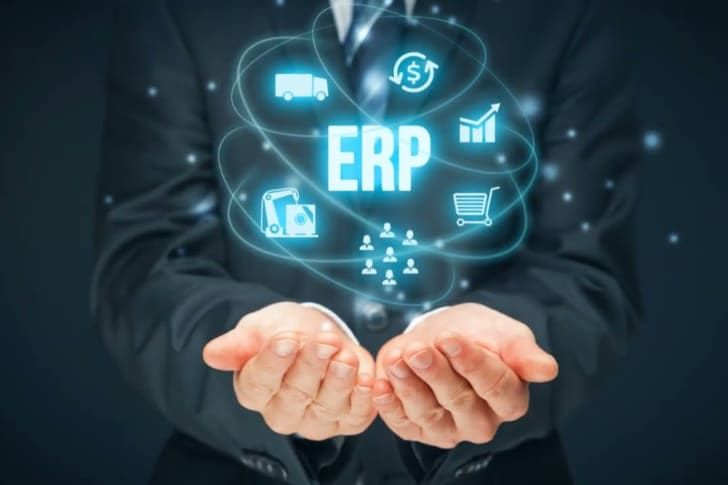In 2025, cloud-based Enterprise Resource Planning (ERP) systems have become indispensable for businesses aiming to streamline operations, enhance scalability, and leverage real-time data insights. As organizations increasingly migrate from on-premise solutions to cloud platforms, selecting the right ERP system is crucial. This article delves into the leading cloud-based ERP solutions of 2025, comparing their features, benefits, and ideal use cases to help businesses make informed decisions.
🔍 Understanding Cloud-Based ERP
Cloud-based ERP systems integrate core business processes such as finance, supply chain, human resources, and customer relationship management into a unified platform accessible via the internet. Unlike traditional on-premise solutions, cloud ERPs offer advantages like:
-
Scalability: Easily adjust resources based on business needs.
-
Cost Efficiency: Reduced IT infrastructure and maintenance costs.
-
Accessibility: Access from anywhere, promoting remote work and real-time collaboration.
-
Automatic Updates: Regular software updates without manual intervention.
🏆 Leading Cloud-Based ERP Solutions in 2025
Based on industry evaluations and user feedback, the following cloud-based ERP solutions stand out in 2025:
1. Oracle NetSuite
Overview: Oracle NetSuite is a comprehensive cloud ERP solution tailored for growing businesses. It offers modules for financial management, CRM, e-commerce, and more.
Key Features:
-
Real-time financial visibility
-
Advanced reporting and analytics
-
Seamless integration with third-party applications
Ideal For: Mid-sized to large enterprises seeking a scalable and customizable ERP solution.
Reference: G2 Learn Hub
2. SAP S/4HANA Cloud
Overview: SAP S/4HANA Cloud is an intelligent ERP suite that leverages AI and machine learning to automate business processes and provide real-time insights.
Key Features:
-
Embedded AI for predictive analytics
-
Streamlined user interface
-
Integration with SAP’s broader ecosystem
Ideal For: Large enterprises with complex operations requiring advanced analytics and automation.
Reference: hubifi.com
3. Microsoft Dynamics 365
Overview: Microsoft Dynamics 365 combines ERP and CRM capabilities, offering a unified platform for business operations.
Key Features:
-
Integration with Microsoft 365 and Azure
-
AI-driven insights for decision-making
-
Modular applications for various business functions
Ideal For: Organizations already using Microsoft products seeking seamless integration.
Reference: ERP Software Blog
4. Acumatica Cloud ERP
Overview: Acumatica provides a flexible and user-friendly ERP solution designed for small to mid-sized businesses.
Key Features:
-
Role-based dashboards
-
Mobile access for on-the-go operations
-
Strong financial and distribution management
Ideal For: Growing businesses needing a cost-effective and adaptable ERP system.
Reference: ERP Software Blog
5. Epicor Kinetic
Overview: Epicor Kinetic is a cloud ERP solution focused on manufacturing industries, offering tools to manage production, inventory, and supply chain.
Key Features:
-
Advanced manufacturing execution system (MES)
-
Real-time inventory tracking
-
Customizable workflows for production processes
Ideal For: Manufacturers seeking an industry-specific ERP solution.
Reference: top10erp.org
🔄 ERP Software Comparison Table
| ERP Solution | Target Audience | Key Strengths | Ideal Use Case |
|---|---|---|---|
| Oracle NetSuite | Mid-sized to large enterprises | Comprehensive modules, scalability | Growing businesses with diverse needs |
| SAP S/4HANA Cloud | Large enterprises | AI integration, advanced analytics | Complex operations requiring automation |
| Microsoft Dynamics 365 | Organizations using Microsoft products | Seamless integration, modular applications | Businesses seeking unified platform |
| Acumatica Cloud ERP | Small to mid-sized businesses | User-friendly interface, mobile access | Growing businesses needing flexibility |
| Epicor Kinetic | Manufacturing industries | Industry-specific features, MES | Manufacturers requiring specialized ERP |
💡 Factors to Consider When Choosing a Cloud ERP
Selecting the right cloud ERP system involves evaluating several factors:
-
Business Size and Complexity: Larger enterprises may require ERP solutions with advanced features and scalability, while small to mid-sized businesses might prioritize cost-effective and user-friendly options.
-
Industry Requirements: Certain industries, like manufacturing, may benefit from ERP systems tailored to their specific needs.
-
Integration Capabilities: Ensure the ERP system can integrate seamlessly with existing software and systems.
-
Customization and Flexibility: The ability to tailor the ERP system to unique business processes can be crucial.
-
Support and Training: Adequate vendor support and user training are essential for successful ERP implementation.
🏁 Conclusion
In 2025, the landscape of cloud-based ERP solutions is diverse, with each offering unique features catering to different business needs. Oracle NetSuite and SAP S/4HANA Cloud lead in comprehensive functionalities and advanced analytics, making them suitable for large enterprises. Microsoft Dynamics 365 offers seamless integration for organizations already within the Microsoft ecosystem. Acumatica Cloud ERP provides flexibility and user-friendliness for growing businesses, while Epicor Kinetic stands out for manufacturing industries with its specialized features.
When selecting a cloud ERP system, businesses should carefully assess their specific requirements, budget, and long-term goals to choose the solution that best aligns with their needs.
📰 News Highlights
-
Oracle’s Cloud Expansion: Oracle projects its cloud infrastructure revenue to reach $166 billion by fiscal year 2030, emphasizing its commitment to cloud services. Reuters
-
Salesforce’s AI Integration: Salesforce forecasts over $60 billion in revenue by 2030, driven by its AI platform, Agentforce 360, and strategic investments in AI capabilities. Reuters
-
SAP’s Global Implementation: Anjani Food & Beverages successfully implemented SAP S/4HANA Cloud, enhancing operational efficiency and data management. The Economic Times
